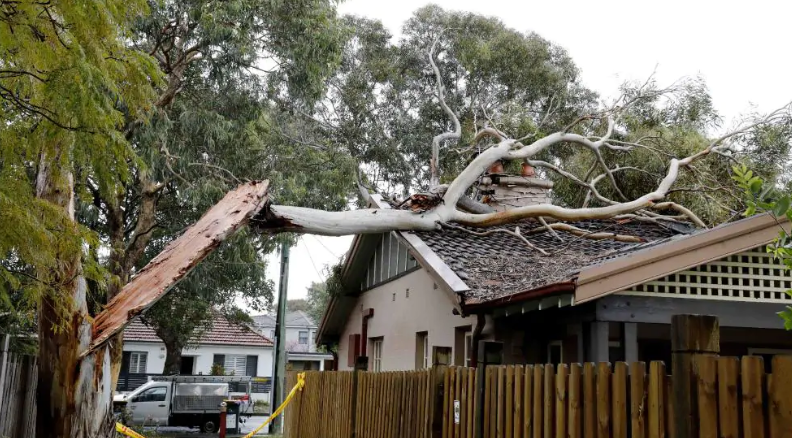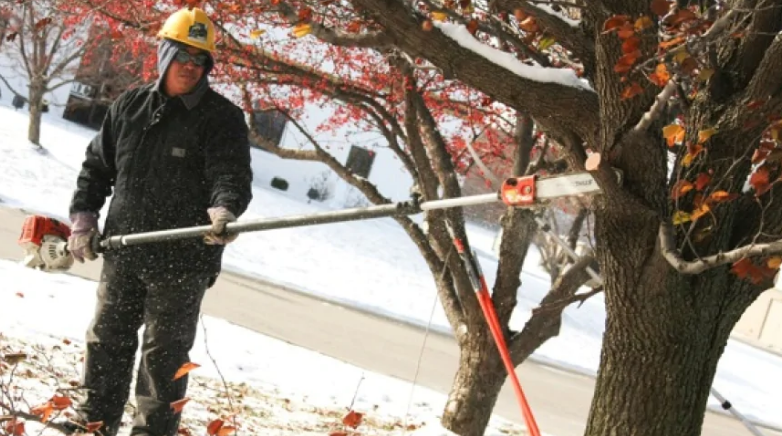A homeowner’s insurance policy provides protection for the homeowner against damages and losses to their residence and the possessions within. Additionally, these policies cover liabilities arising from accidents occurring within the insured property. Limits on the benefits available to the insured individual in the event of a covered incident are specified in every homeowner’s insurance policy.
Generally, homeowners insurance will not cover any costs incurred when taking care of trees. This includes pruning or trimming branches. However, some insurance providers offer compensation for repairing or replacement if the damage is caused by trees in a storm for example.

Most home insurance policies do cover trees and the damage they cause but they do have exclusions. For example, if a policyholder is found to be negligent in maintaining their trees and damage occurs due to their failure as a property owner, they are not compensated. Individuals are required to cut all overhanging branches from trees that are close to or touching your home.
If a tree dies and is left to rot it will eventually fall over it left standing for a couple of years. If it were to fall on your home you would not be compensated as you had ample time to remove it yourself.
What we cover
ToggleHow much does Tree trimming normally Cost?
There are many factors that influence the cost of trimming trees. The cost of trimming a tree with a height of up to 25 feet ranges between $250 and $750 depending on how much foliage is being removed.
Prices can range right up to $2000 for trimming work on really large trees that are hard to get to or awkward and time-consuming to work on.
You can take several measures to ensure that you cut down the cost of trimming your trees. For example, if the branches of your trees are hanging over power lines, a utility provider can trim them for free. Secondly, get an annual maintenance schedule for your trees to ensure that your trees are in good condition and avoid branch failure due to poor habit and structure.
Other factors that add to cost:
The number of trees: Arborists charge high costs for trimming more trees. The higher the number of trees that need to be trimmed, the more time is needed to do the work. You should consider hiring a trimmer to trim all your trees at once as you are likely to get a better deal.
The health status: If the arborist considers an unstable tree, you will pay more for the services as special equipment such as a cherry picker will need to be brought in.
Location: If your trees are hard to reach, you will pay more for trimming services. For example, tree-cutting services will charge more if the branches needing removal are handed over to a home or power lines. It will take more time to rig up ropes and lower the branch down safely.
Urgency: In some cases, homeowners may need emergency services after situations such as storms and hurricanes. Trimmers will charge extra fees for emergency services. The cost may be as high as $250 per hour. Consider phone emergency services to make the tree stable and safe (free service), then call out tree trimming services afterward at a good time.
Note: For more in-depth information on tree trimming costs, please visit our homepage for links to articles.




When is the Best Time of Year to Trim a Tree?
Trimming trees is necessary to ensure they are healthy at all times. However, trimming is best done in the cooler months when pests like borers and fungal diseases like oak wilt are far less active.
Trimming trees when they are dormant is much better for their health, but also a lot better for your wallet. Tree-cutting service charges on average 20% less in winter because of lower demand.

Can you trim trees during the summer and spring?
Sometimes it is unavoidable to trim trees in summer or spring. Some trimming is fine like deadwood removal, and of course emergency jobs like cleaning up a branch failure or preparing a tree for a hurricane. That being said, it is advisable to wait for winter where possible.
Fall Tree Trimming.
I would also advise waiting until after fall to trim. You want to catch a tree towards the end of winter when it is just about to start growing again. The reason is you want the wound you leave from a removed branch to heal as soon as possible. Leaving it exposed to all winter will allow moisture in the wounds which can rot the tree from the inside out.
How often should trees be trimmed?
Timing is a critical factor when it comes to trimming trees. The growth rate of different species of trees varies. Therefore, the interval of the trimming also varies from one species to another. Generally, arborists recommend trimming intervals of 3 to 5 years. Young trees should be trimmed after every 2 to 3 years. If you are uncertain about the timeline required for your trees, you should consider contacting a trimming expert near you.










